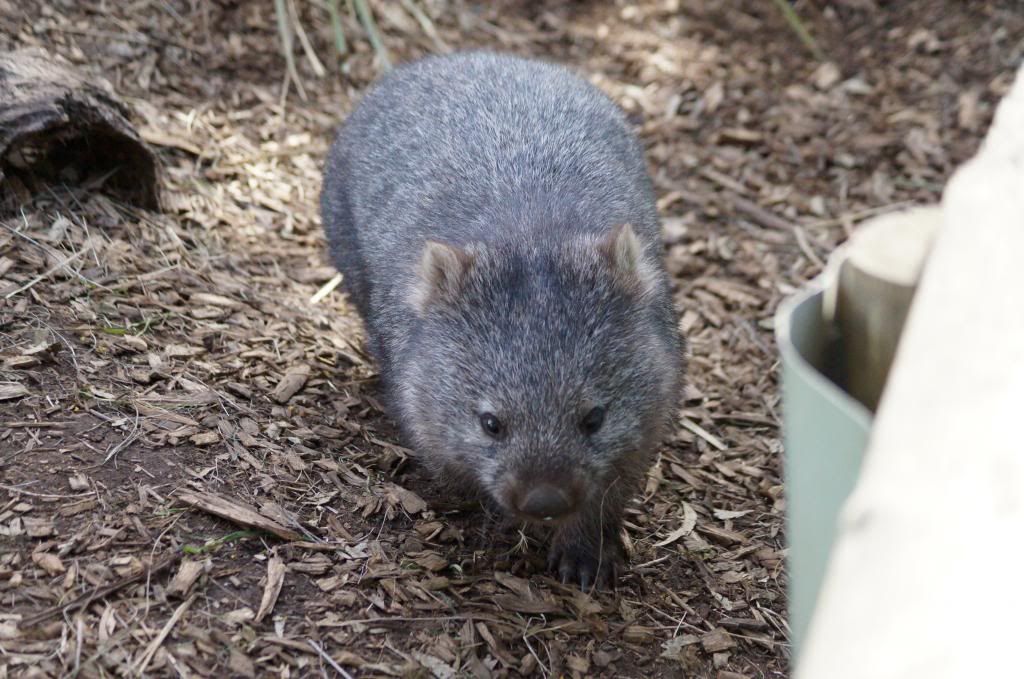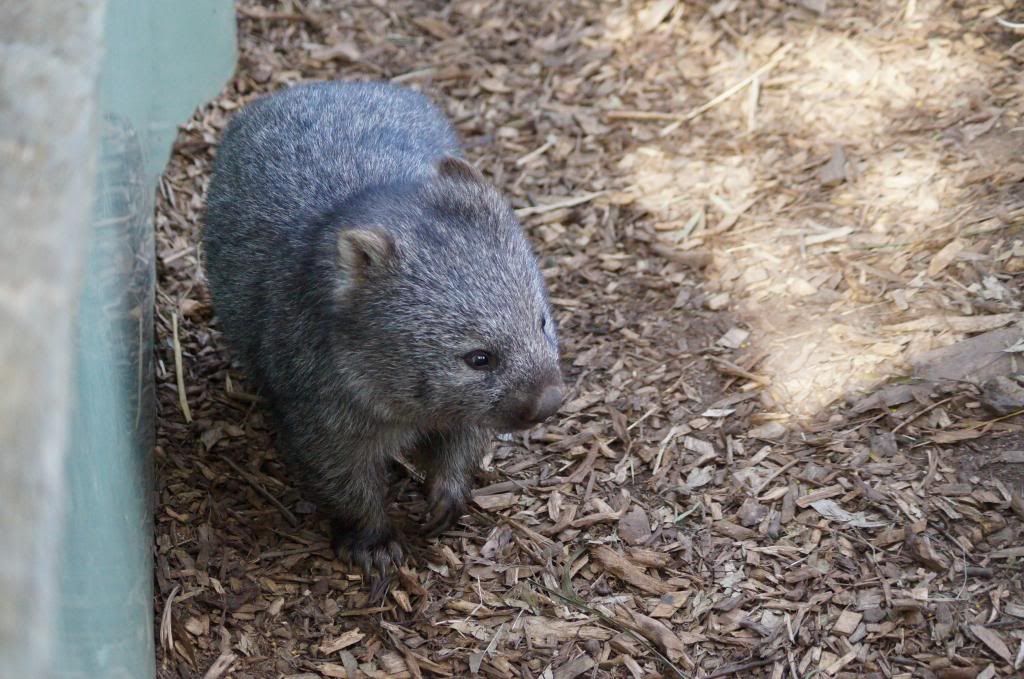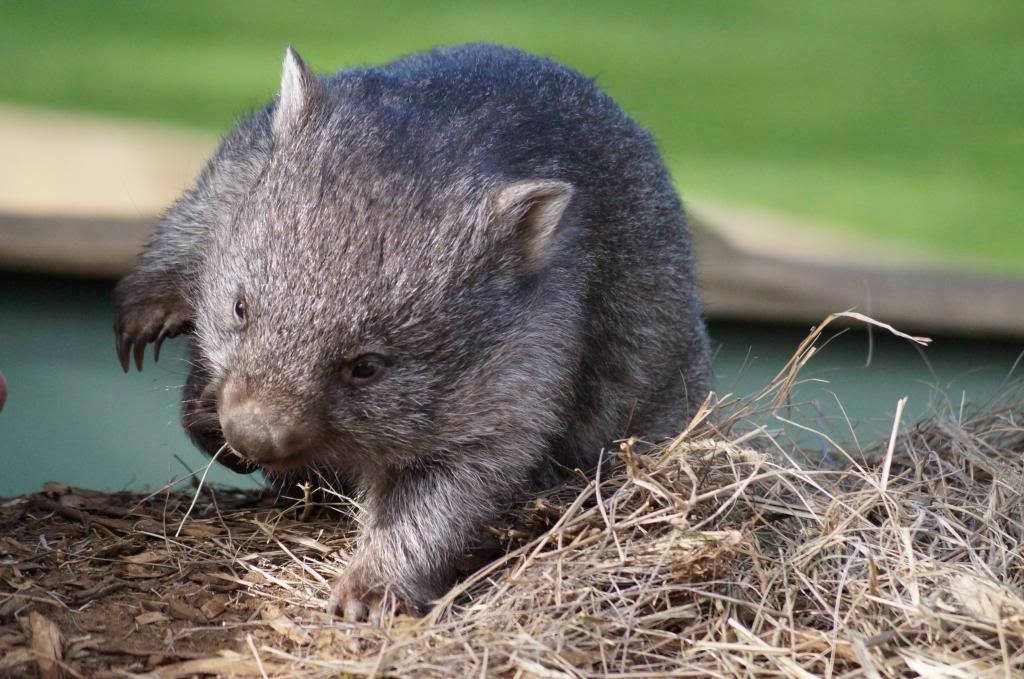but I could not resist. Common Wombat as found in Tasmania -Vombatus ursinus tasmaniensis .
These guys have been rescued as orphans, Ben the first (2 photos) weighed just under 150grams, now he is around 15kg. He will be released at about 2 years of age. The second, I don't have much info, this one is about half of Ben's weight and also will be released at 2. They have been rescued by the Bonorong Wildlife Sanctuary's FOC (friends of Carers or Critters) program - all volunteers! Last year there were over 5200 calls for sick or injured wildlife in Tasmania. Bonorong were able to get someone to 98% of those calls.
This year, they are trying to raise money to establish Tasmania's first Wildlife only vet clinic. Proceeds from admission money and donations go toward care and rescue of our wildlife.












Adorable . I once read somewhere that Tas has the highest rate of roadkill than anywhere else in the world. I don't know if that's true, but the statistics on here http://www.roadkilltas.com/ , and what my eyes see by the sides of the roads day to day, is heartbreaking. One animal every two minutes?!!! So extremely sad. I think Tas roads, especially country roads, should all be speed curfewed dusk to dawn, or something!? Trouble is, how do you get people to abide? Anyway, off my soapbox now. Beautiful shots Dale - thanks to you & all rescuers/rehabilitators for the wonderful job you do
. I once read somewhere that Tas has the highest rate of roadkill than anywhere else in the world. I don't know if that's true, but the statistics on here http://www.roadkilltas.com/ , and what my eyes see by the sides of the roads day to day, is heartbreaking. One animal every two minutes?!!! So extremely sad. I think Tas roads, especially country roads, should all be speed curfewed dusk to dawn, or something!? Trouble is, how do you get people to abide? Anyway, off my soapbox now. Beautiful shots Dale - thanks to you & all rescuers/rehabilitators for the wonderful job you do 
West Coast Tasmania
A very worthy soapbox to be on, RubyE, & I like your idea of speed limits. Without taking statistics I get the strong impression that western grey kangaroo roadkills along our stretch of road have declined since the council erected kangaroo warning signs. But then the road kill reduction might have more to do with a significant number of the kangaroos being shot one night, not long after the warning signs went up.
In the meantime it's great that there are organisations like Bonorong Wildlife Sanctuary to rescue injured wildlife. What's desperately needed is governments which will protect wildlife habitat rather than continually open it up to miners & foresters. While habitat remains unprotected there's little likelihood in an increase in respect for wildlife from motorists.
It is so wonderful to see healthy looking Wombats. Like Ruby I see dead ones on the side of the road every morning, at least around here most people stop to check. I know that, because by the time I drive they are all turned on their backs and marked with a cross.
I have some rescue gear in my car, blanket, gloves, desinfectant, bangages etc. and a spray can.
Around my place , the biggest danger for Wombats , after cars, is " Mange". It is transmitted by Foxes. One more tragedy caused by feral animals.
I would also thank you and all the volunteers that are helping our beautiful wildlife.
M-L
Here is the sign our Goverment is placing in "heavy traffic" wildlife crossing areas. These signs are warning only, and are not statutory speed limits, so there is no requirement to obey them.
Road kill is one of the major killers of native species (the Devil Facial Tumor Disease is highest for Devils). All our natives are being affected by habitat loss, which in turn brings them closer to our roads, further leading to the road kill problem.
I like M-L's marking of road kill to indicate that it has been checked, but here in Tassie, it would take me 30 minutes to drive the 3 kilometres from home to work. Our other problem is that no one takes responsibility for the removal of dead animals, and they are just left for other wildlife (Ravens, Devils, Quolls and other natives) to clean up, which just increases the potential for fatalities.
In Tasmania, it is actually illegal to remove road kill from the roadway, other than to move it off to the side of the road, to prevent causing further accidents.
Dale Huonville, Tasmania
Was just about to mention the signs . Its pitiful that they aren't a legally enforcable speed limit though,IMO. I'm one of those strange people who stop, when I can, and move fresh carrion from the road onto the verge - travel with my gloves in the boot all the time. Sorry, it's a bit gross I know, but hey....I wish those who hit the animal in the first place, would think to do that - not to mention check the animal, or check for young of course. I guess they're in so much of a hurry, that perhaps that is just too much like hard work
. Its pitiful that they aren't a legally enforcable speed limit though,IMO. I'm one of those strange people who stop, when I can, and move fresh carrion from the road onto the verge - travel with my gloves in the boot all the time. Sorry, it's a bit gross I know, but hey....I wish those who hit the animal in the first place, would think to do that - not to mention check the animal, or check for young of course. I guess they're in so much of a hurry, that perhaps that is just too much like hard work  . Bet some stop to check for damage to their car though......
. Bet some stop to check for damage to their car though......
West Coast Tasmania
Here is one more of my ideas. What to do when you hit wildlife should be part of getting your drivers licence.
M-L
I like it, Araminta. It would also contribute to the creation of a culture of respect for wildlife.